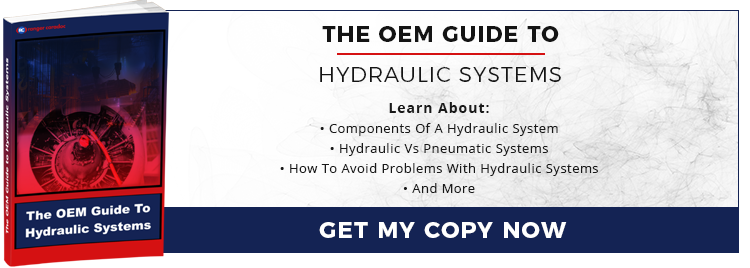%20And%20Why%20Is%20It%20Important.jpg?width=800&name=What%20Is%20Cushioning%20(In%20Hydraulic%20Cylinders)%20And%20Why%20Is%20It%20Important.jpg)
A hydraulic cylinder is a mechanical actuator which gives a unidirectional force via a unidirectional stroke. A tube in which a piston operates under the action of fluid pressure is referred to as cylinder housing. Cylinder cushioning is an arrangement intended to regulate the speed of the piston as it ends the stroke. The piston’s deceleration begins when the plunger approaches the end of the cap.
Why Is Cushioning Necessary?
Cushioning is needed to lower the speed of the cylinder before it reaches the end cap. Lowering the speed of the piston helps reduce stress on the components within the cylinder. It also lessens vibration conveyed to the other parts of the machine. The end-of-stroke effects can be handled using pneumatic cushioning, by installing shock absorbers, or by simple impact cushioning.
Attaining ‘Ideal Cushioning’
Effective or ‘ideal’ cushioning takes place when the kinetic energy is sufficiently dispersed to lower the velocity of the piston when it reaches its travel destination. It prevents the impact of the piston on the end cap. Besides producing less noise when the components come into contact, it also reduces piston deceleration time.
Determining Cushioning Settings
Pneumatic cushioning helps enhance the work environment as well as machine throughput when it comes to rapid-cycle applications. Each cylinder has a particular setting for ideal cushioning for a certain load as well as operating pressure. If there is too much pressure, the piston is likely to take a relatively long time to reach the travel destination or the end of the stroke. Too little cushioning can increase the end-of-stroke shock.
To adjust the piston velocity, you need to know the cylinder characteristics, specified load mass and the operating pressure specified by the manufacturer. Fixing throttling non-return valves with the end ports of a cylinder can help achieve the right level of cushioning.
Underdamping and Overdamping
Factory adjustment can result in ‘damping’. Ideal cushioning can’t be achieved when the cylinder is overdamped because the impact of damping will worsen irrespective of the alignment. Taking the actions outlined below can help solve the challenge.
• Increase piston velocity
• Increase the moving mass
• Reduce operating pressure
When the cylinder is underdamped, a severe shock is experienced regardless of the adjustment setting. There are ways through which this problem can be solved, such as:
• Minimise piston velocity
• Minimise mass
• Include external shock absorbers within the cylinder assembly
• Enhance operating pressure
Stress & Vibration
Cushioning not only helps reduce the stress conveyed on the components of the cylinder but also minimises vibrations transmitted to the structure of a machine. Velocity, mass and operating pressure all determine how much cushioning is required and the actions needed to reach the ideal level. When ideal cushioning is attained, the cylinder’s operating parameters should be unaffected during use. To find out more please have a chat with a member of our engineering design team.







